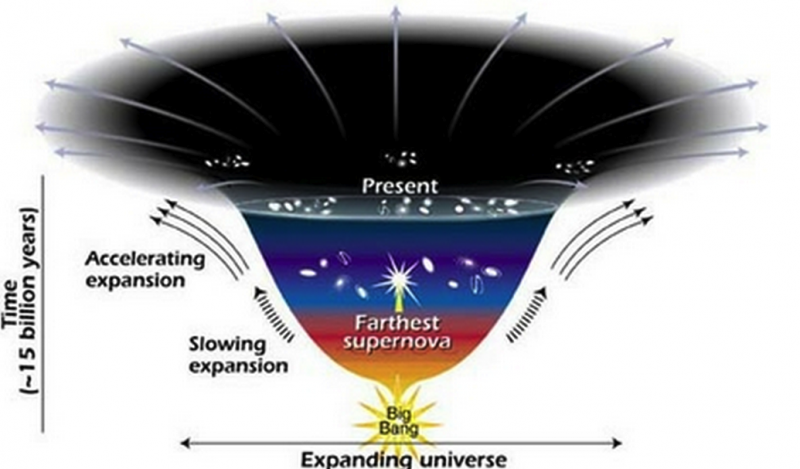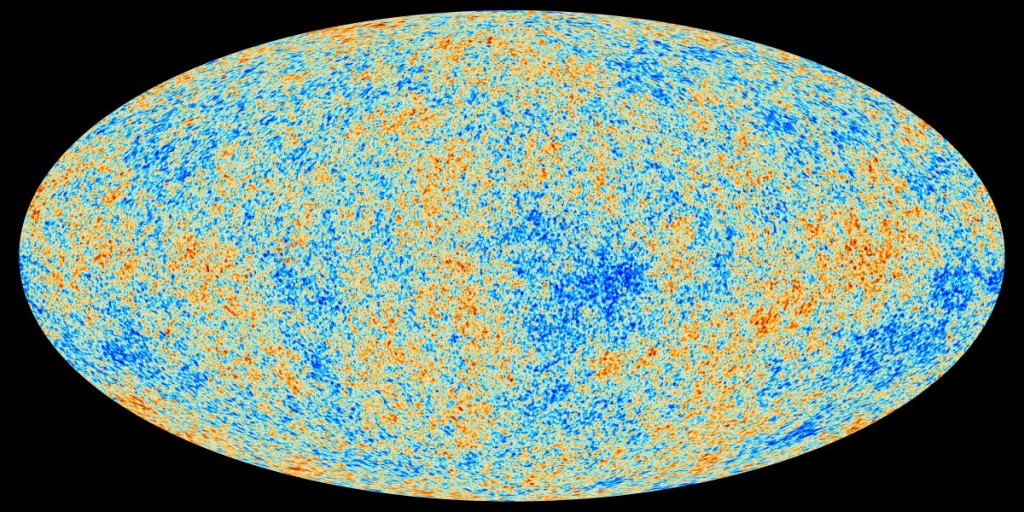Astrophysicists Announce Major Discovery Of Big Bang’s Smoking Gun
Scientists have found the first direct evidence that the universe expanded incredibly quickly in the microseconds after the Big Bang.
This is ground-breaking and Nobel-Prize-worthy research, if it is confirmed by other researchers.
They found these signatures of cosmic inflation are gravitational waves in the cosmic microwave background radiation of our universe. Gravitational waves created by the Big Bang rippled through our infant universe during an explosive period of growth called inflation — when the universe expanded by 100 trillion trillion times, in less than the blink of an eye.
Actually, it’s much quicker than a blink of an eye: Specifically, 10^-34 second, or a decimal point followed by 33 zeroes and a 1.
That inflation happened about 13.82 billion years ago, as the universe expanded from nothingness to the vastness of space as we see it today:

The major announcement came from the Harvard-Smithsonian Center for Astrophysics. Here’s the technical data and papers that go along with the announcement from the group at the BICEP2 (Background Imaging of Cosmic Extragalactic Polarization) project.
“This work offers new insights into some of our most basic questions: Why do we exist? How did the universe begin?,” astrophysicist Avi Loeb, who wasn’t a member of the study team said in a statement about the Harvard-Smithsonian research. “These results are not only a smoking gun for inflation, they also tell us when inflation took place and how powerful the process was.”
A groundbreaking discovery
Here’s the kind of data they were working with, this image of the cosmic microwave background radiation from the Plank telescope:

From theoretical analyses and theories, they figured that signatures from the gravitational waves created by the big bang would be visible in this kind of data. According to Nature News:
Cosmologists knew, however, that inflation would have a distinctive signature: the brief but violent period of expansion would have generated gravitational waves, which compress space in one direction while stretching it along another. Although the primordial waves would still be propagating across the Universe, they would now be too feeble to detect directly. But they would have left a distinctive mark in the CMB: they would have polarized the radiation in a curly, vortex-like pattern known as the B mode.
They saw some signals of this B-mode before in the cosmic microwave data above, but they were extremely faint.
The researchers developed the BICEP2 detector at the south pole to gather their new data. According to NASA, they had to create a unique array of detectors, which work like the pixels in digital cameras but can detect how light is polarized. The system operates at just 0.45 degrees Fahrenheit above the lowest temperature achievable, absolute zero.
With this ultra sensitive detector, they were able to detect this B-mode signature at a five-sigma significance: the standard significance to declare a discovery of this magnitude.
Here’s what that B-Mode polarization looks like, from the data released today. This pattern can only be created by gravitational waves, according to Scientific American:

Why it’s significant
The information derived from this new gravity wave data will give us an idea of what the universe was like when it just came into existence. Gravitational waves were the last untested prediction of Albert Einstein’s General Theory of Relativity. The BICEP2 researchers were analyzing data from the early universe to find the signals of these waves.
The data they’ve announced today is even better, because it’s is so strong it rules out many theories, according to Scientific American’s Clara Moskowitz, who writes “the signal is coming through much more strongly than expected, ruling out a large class of inflation models and potentially pointing the way toward new theories of physics, experts say.”
Here’s a great post for more details on cosmic inflation, from Sean Carroll at the Preposterous Universe.
Though the signal is strong and everyone’s excited, there are still reasons not to get ahead of ourselves. This new data will need to be scrutinized by other scientists and confirmed by other experiments.
Source: http://www.businessinsider.com/harvard-smithsonian-center-for-astrophysics-announce-discovery-2014-3#ixzz2xaSmhg7r



